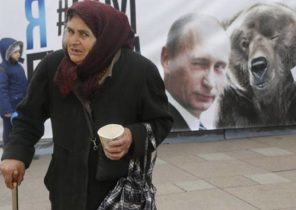
After Western sanctions, the sharp fall in oil prices and exchange-rate downturn, in 2014 drove the country into recession, the Russian banking sector, severely affected by the slowdown in economic growth, again in the black.
The Central Bank expects that the profit for the year 2016 will reach one trillion rubles ($16.6 billion dollars), which is several times higher than the same period a year earlier.
“Last year was very difficult for the banking system: during the first few months there was an increase in interest rates, and Deposit rates went up sharply, while loan rates were not able to catch up with them, and this meant that the system suffered losses, — said the head of Russian Central Bank Elvira Nabiullina Financial Times. As a consequence, increased non-performing loans. They are now at a stable level, and we hope that this trend will continue”.
However, the figure of one trillion, the banking system mainly owes to Sberbank, Russia’s largest lender, which alone accounts for almost one third of the total sector’s assets and a controlling stake in which belongs to the Central Bank.
“Size matters,” says the financial Director of the savings Bank Alexander Morozov. The Bank cut its credit portfolio and carefully managed the risks to at the moment to show the result in a 483 billion which is two and a half times more than last year.
Investors continue to play on the rise in anticipation of the jump of the annual results of the savings Bank, which will only continue to grow. “Let’s just say there is a big backlog,” says Luis Saenz (Luis Saenz), Director of shares in the Russian financial group BCS.
However, while Sberbank soars into the clouds, most of the sector barely held afloat. CB consistently removes banks at a rate of about 10 percent per year. According to estimates of officials and senior bankers, after tightening of the screws will not survive more than 200 banks.
CBA argues that most banks are losing their licenses after the turn to criminal activity to cover their losses. MS Nabiullina recently rebuilt their own team for supervision in the proof that harsh measures taken are not enough.
“The time has come when continuing the policy of universal sugarcoat the true state of Affairs in the banking system is equivalent to the approach of an impending disaster,” says Andrei Movchan, from the Moscow Carnegie Center.
Large creditors with good connections from anything not insured. In 2016, we have witnessed the demise of Russia, among the clients of which were a number of officials of the highest rank. It is expected that in the coming weeks, regulators will decide the fate of Tatfondbank, which is one of the 50 largest creditors, and Relight, the Bank having strong ties with the Russian Orthodox Church.
The Central Bank argues that the Russian economy it will ultimately benefit. “It is important to maintain confidence in the banking system and to protect the rights of depositors and creditors”, — said Mrs. Nabiullina.
To this end, the regulators plan to change the system to rescue banks. MS Nabiullina defends the bill under which the Central Bank will have direct access to the capital of distressed banks, pushing into the background the Agency for Deposit insurance, which currently manages funds of the Central Bank.
This step can be considered as an implicit response to criticism of the Agency, saying that its cheap long-term funding, thanks to which banks can absorb the troubled lenders in the regulatory framework of the financial recovery program, often abused.
Yury Isaev, the Director of the Agency for Deposit insurance, says that the system of financial recovery helps to prevent further difficulties in the sector, keeping large banks afloat. “Not just bring them back to life and put together in the balance sheet. You need to go through a very complex filtering system, he says. — They give all the money back — we have to do without failures [recovery system]”.
Mr. Isaev, who proudly showcases in his office a reward, received when he was a member of the Russian security service said that further consolidation is going to be good for the sector. “Small banks are under threat. They are unable to grow because they have no capital and good customers, ‘ he says. In other sectors, if your business is profitable, and the ideas you have have ended, you can always sell. With banks is not so”.
Mr. Morozov of the savings Bank agrees with this point of view. “Consolidation is inevitable, he says. — The Central Bank is doing a lot in order to minimize the negative effect, accumulated over many years.”
“When you have five [state] banks account for 56 percent of the system with the system what type are we dealing with?” asks Mr. Movchan.






